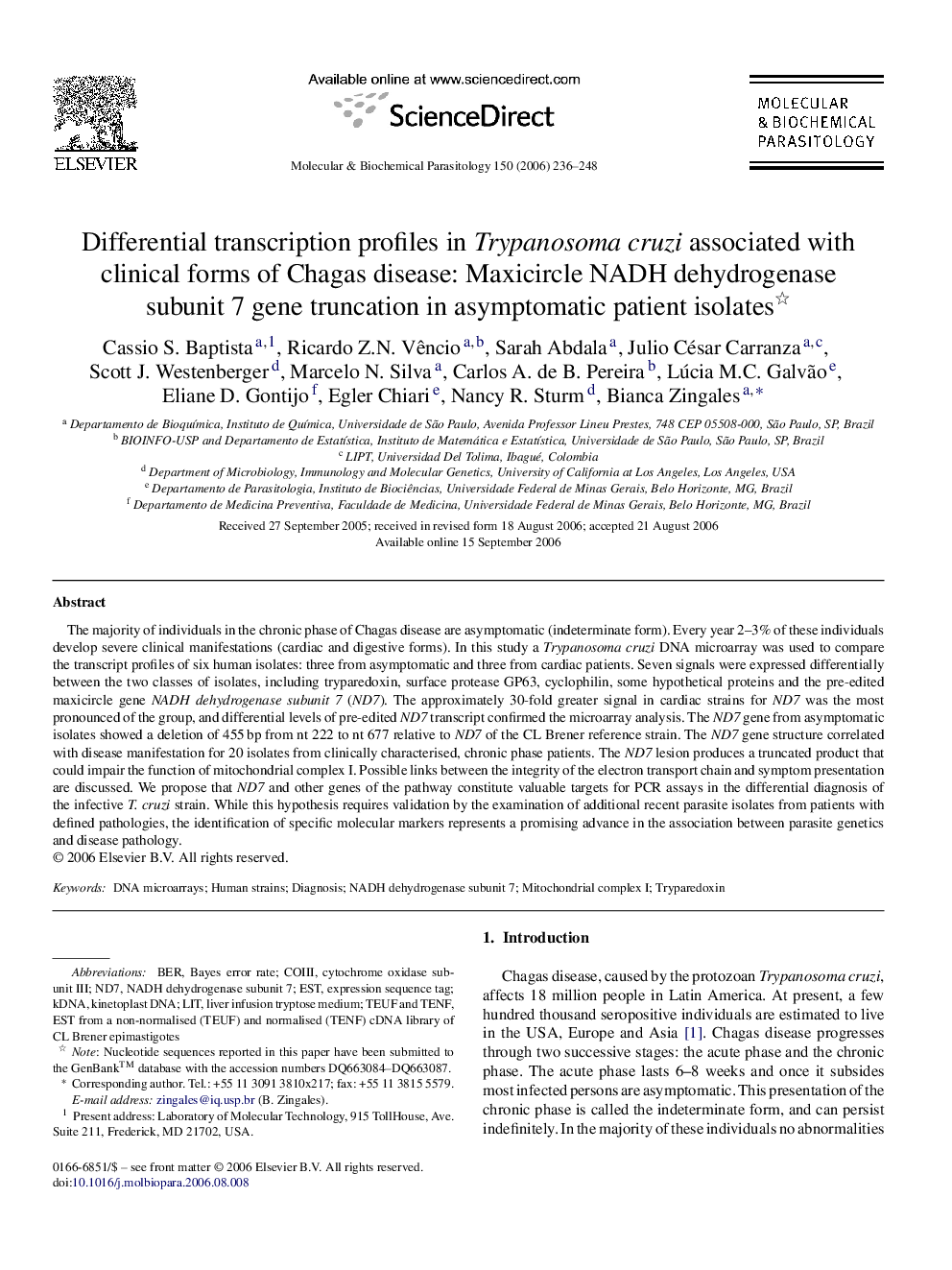| Article ID | Journal | Published Year | Pages | File Type |
|---|---|---|---|---|
| 5916148 | Molecular and Biochemical Parasitology | 2006 | 13 Pages |
Abstract
The majority of individuals in the chronic phase of Chagas disease are asymptomatic (indeterminate form). Every year 2-3% of these individuals develop severe clinical manifestations (cardiac and digestive forms). In this study a Trypanosoma cruzi DNA microarray was used to compare the transcript profiles of six human isolates: three from asymptomatic and three from cardiac patients. Seven signals were expressed differentially between the two classes of isolates, including tryparedoxin, surface protease GP63, cyclophilin, some hypothetical proteins and the pre-edited maxicircle gene NADH dehydrogenase subunit 7 (ND7). The approximately 30-fold greater signal in cardiac strains for ND7 was the most pronounced of the group, and differential levels of pre-edited ND7 transcript confirmed the microarray analysis. The ND7 gene from asymptomatic isolates showed a deletion of 455Â bp from nt 222 to nt 677 relative to ND7 of the CL Brener reference strain. The ND7 gene structure correlated with disease manifestation for 20 isolates from clinically characterised, chronic phase patients. The ND7 lesion produces a truncated product that could impair the function of mitochondrial complex I. Possible links between the integrity of the electron transport chain and symptom presentation are discussed. We propose that ND7 and other genes of the pathway constitute valuable targets for PCR assays in the differential diagnosis of the infective T. cruzi strain. While this hypothesis requires validation by the examination of additional recent parasite isolates from patients with defined pathologies, the identification of specific molecular markers represents a promising advance in the association between parasite genetics and disease pathology.
Keywords
Related Topics
Life Sciences
Biochemistry, Genetics and Molecular Biology
Molecular Biology
Authors
Cassio S. Baptista, Ricardo Z.N. Vêncio, Sarah Abdala, Julio César Carranza, Scott J. Westenberger, Marcelo N. Silva, Carlos A. de B. Pereira, Lúcia M.C. Galvão, Eliane D. Gontijo, Egler Chiari, Nancy R. Sturm, Bianca Zingales,
